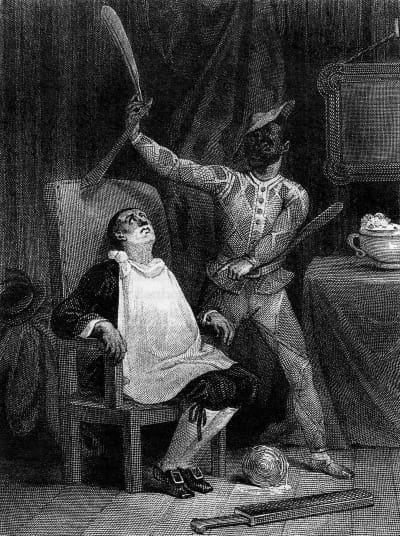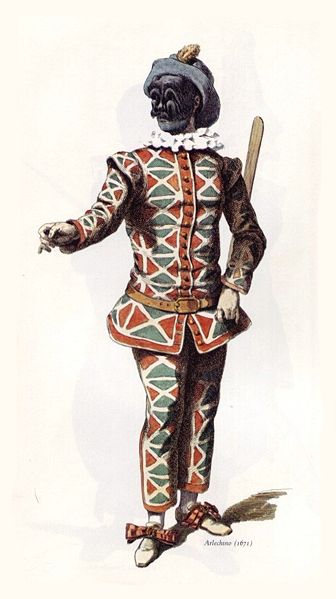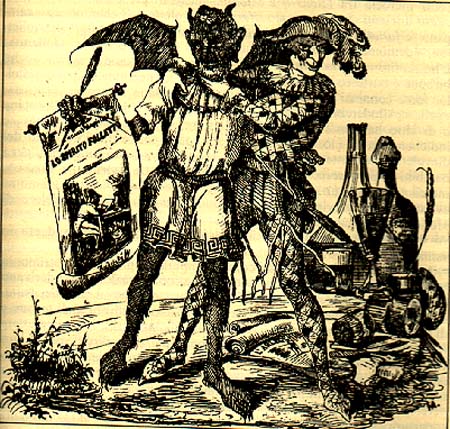Harlequin of the Commedia dell'arte

Was the Harlequin of the Commedia dell'arte originally Black?
This is not a new idea. In his heyday Harlequin wore a black mask as in the picture below. Just as there is a tradition of White Face clowns (e.g. the Pierrot), there is also a tradition of Black Face clowns, implying a link with Africa and everything that implies. Since Harlequin is one of the Zanni (servants) of the Commedia, the assumption is that Harlequin is descended from African slaves. Of course it could have simply been that a black mask was cool, with an element of threat. The picture below of Harlequin is by Maurice Sand, George Sand's son, in 1860.

Italians are not keen on the Africa explanation. Venetian playwright Carlo Goldoni said Harlequin had his dark tan because he was from Bergamo, near the mountains.
In France, Pierre Beaumarchais' The Barber of Seville and The Marriage of Figaro in the 1770's, and the subsequent operas by Mozart, Rossini, and others, allowed for possibility that Figaro's origin lay in the black-masked Brighella (commedia) character. In England, Black Harlequin peaked with the slave trade, producing popular bawdy pantomimes like Harlequin Mungo (1787) and Harlequin Negro (1807) - the same year slavery was abolished in England. These farces were subversive and popular, for the sympathetic African slave has a love affair with a white woman and they have happier endings than Othello, which just goes to show that farce and satire are more progressive than tragedy or romantic comedy. They recognize that it's always about the sex after all.
In earlier centuries Harlequin may have been an emissary of the Devil chasing damned souls to Hell (below).

By the 20th century, Harlequin had become reflective, distant, although not defanged of his bite, as in Picasso's moody and effeminate white-faced Leaning Harlequin (aka Seated Harlequin) (1901), below. Agatha Christie uses him as her mysterious agent of death and he is implicit in all of Chaplin's later comedies.

